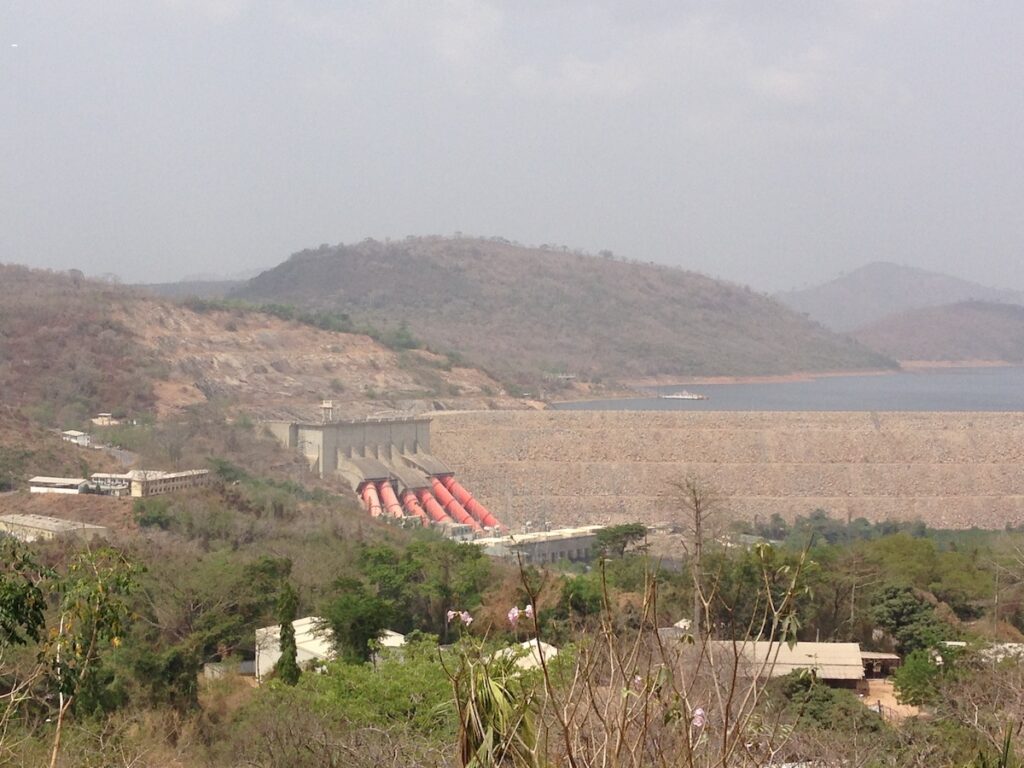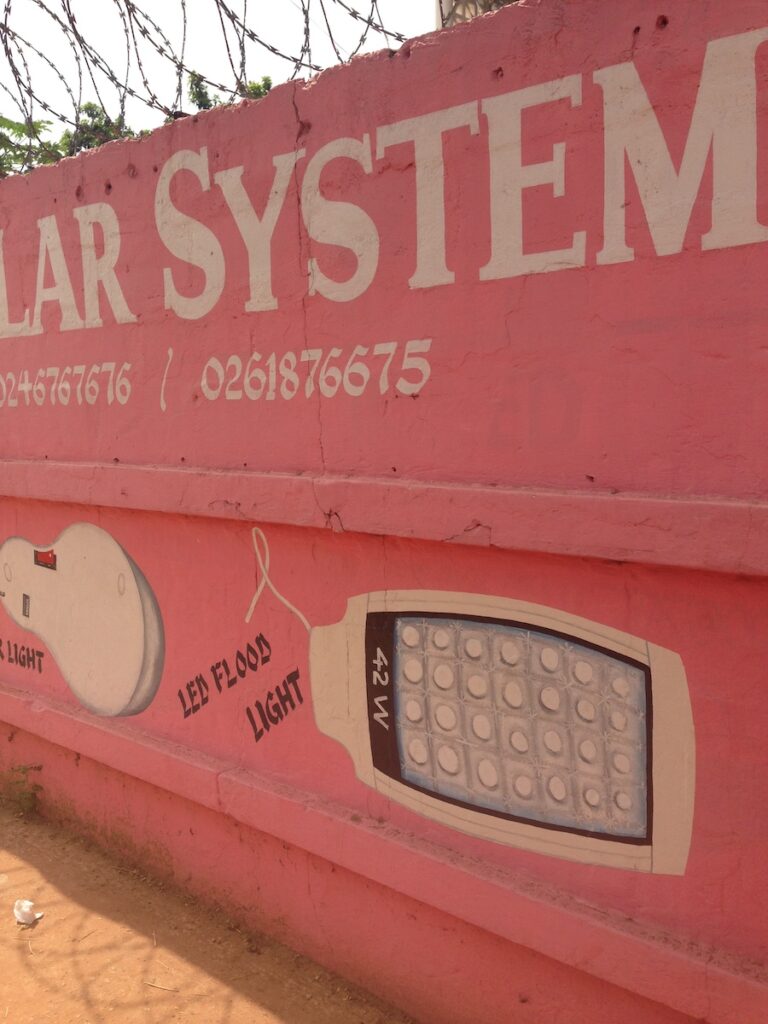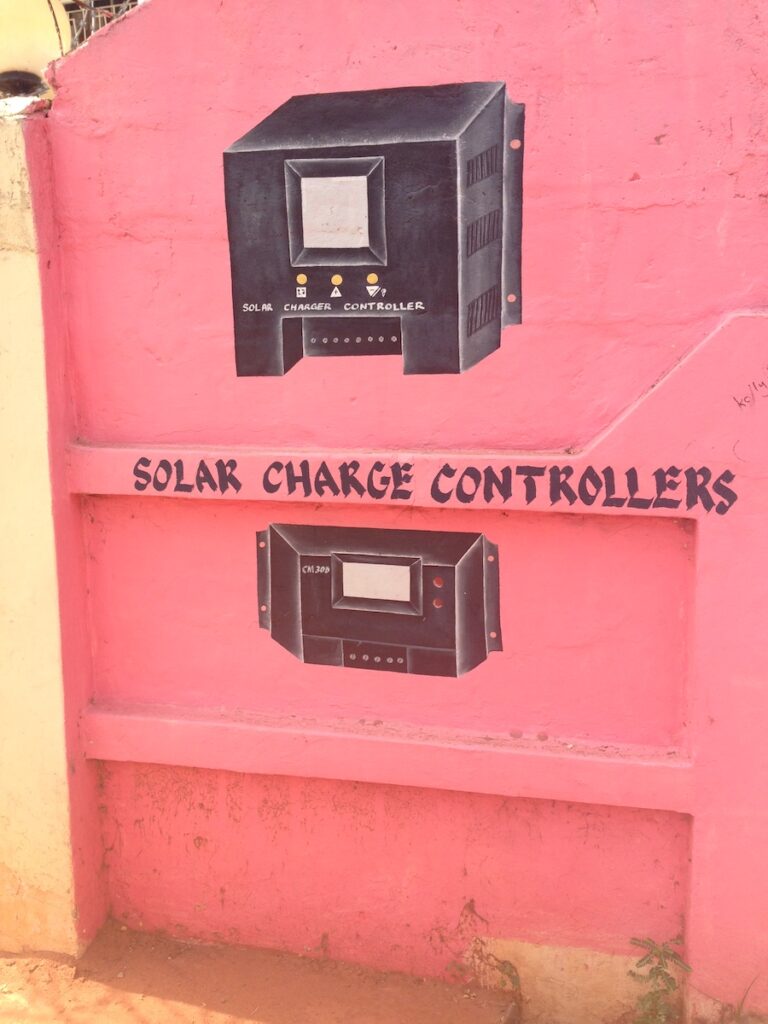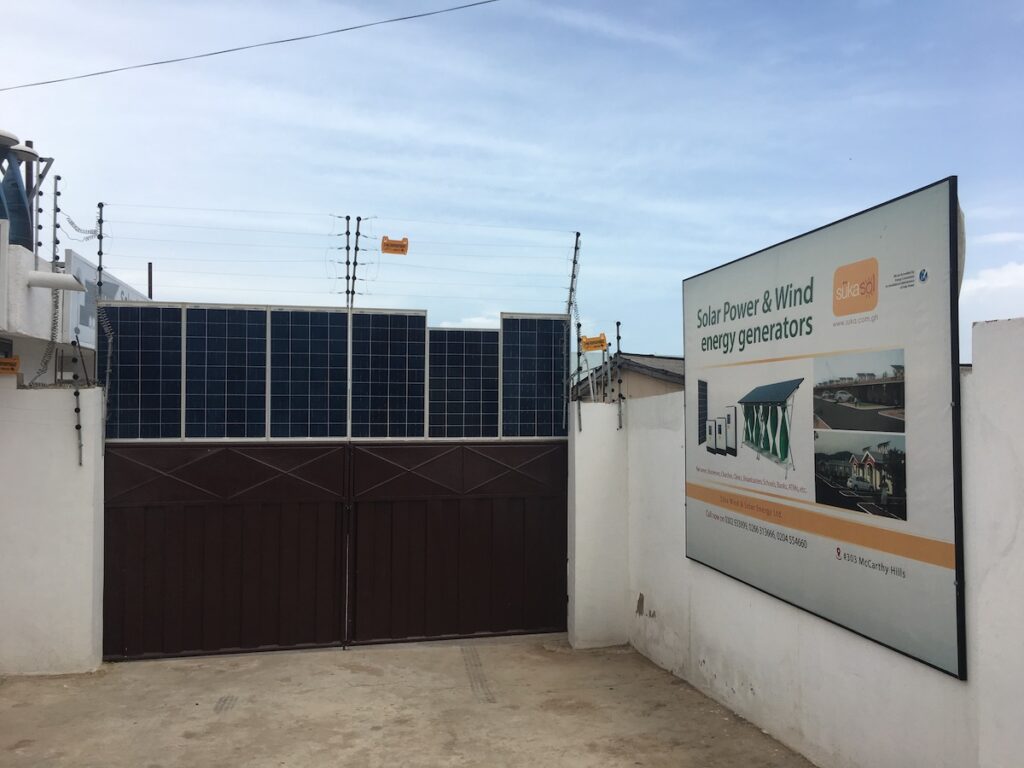Presidential elections will happen in Somalia on Sunday, 15 May 2022. This will most likely not bring peace and stability to the war-torn Somali society. To the contrary, the elections and their aftermath will, in all probability, perpetuate and even worsen to political crisis in the country. On the one hand, the electoral process has already dragged on for almost two years, producing violent clashes between government and opposition forces and instigating vote buying and other forms of political corruption (Gaas and Hansen 2022). On the other hand, and this might even be worse, the country’s “democratization process” is out of tune with important political realities in Somalia, namely with the fact that the government only holds nominal power in parts of Somalia.
Militant Islamists control much of southern Somalia; the northwest of the country has declared its independence 30 years ago and exists since as the secessionist Republic of Somaliland. Other areas in central and northeastern Somalia are to some degree autonomous, partly controlled by clan militias. This means that the government controls only around 20 percent of Somalia’s territory. Foreign troops have to assist the government to hold its areas. Southern Somalia, where most of the resources and the economy of Somalia are concentrated, is still in a phase of active war (EASO 2021).
It can be assumed that the government in Mogadishu would, without external support, collapse even quicker than the Afghan government did in the wake of the US-withdrawal in mid-2021. Moreover, in the areas controlled by the government and its external allies, hardly any services are delivered to the ordinary population. The hallmark of the nominal Somali governments since many years is internal wrangling and massive embezzlement of the state’s budget including the income from foreign aid. The question is: what does the presidential election bring at all? My answer is: it helps to keep up a façade, which serves external actors, including the USA, Ethiopia, the EU and many INGOs and UN organizations, in that it allows the conduct of “business” (development business, counter-terrorism business, political stabilization business, humanitarian business) which enriches a few international and local elites, while it keeps the bulk of Somalis in extreme poverty and caught up in protracted conflict.
A story of many missed deadlines
Somalia should have had a new parliament and a new president long ago. The term of office of the current president Mohamed Ali Farmajo ended in February 2021. The UN and western donors including the USA and the EU have been pushing for free elections already for years (since around 2018). At the same time, the “one person one vote” formula introduced into Somalia’s politics was and remains unrealistic. While external actors, mainly UN officials, tried to push this voting-scheme through, President Farmajo actively undermined it by not taking any steps to prepare elections. This led to conflicts between the president and the prime minister, with the latter trying to steer the preparations of the elections. Eventually, as ACLED (2021) outlined, also in the face of ongoing war in southern Somalia, the major political actors agreed in mid-2020 to holding indirect elections in Somalia – in a similar way as the last elections in 2017.
This indirect election process is complicated: At the local level, family elders nominate a total of almost 30,000 electoral women and men. These then determine the 275 members of the lower house of parliament, the seats of which are not distributed according to party-membership, but according to belonging to patrilineal descent groups (and according to personal networks and who can pay which bribes). The 54 members of the upper house are nominated by electoral committees of the Somali federal member states. Together, the two houses then elect the president (Elmi 2021). President Mohamed A. Farmajo prefers indirect elections because they are strongly controlled by the presidents of the federal member states, some of whom are his supporters. Yet, he even did not push very energetically for the completion of this process. When his term ended on 8th February 2021, no members of parliament had been elected so that Farmajo was able to extend his mandate by decree for two years. This was, I would argue, the easiest way for him to stay in power.
However, it led to violent reactions. Temporarily, armed opposition supporters occupied parts of Mogadishu. The crisis finally calmed down in mid-2021 when Somali elites and external supporters agreed on indirect elections to be concluded by the end of February 2022. Although this deadline was missed, by the end of April 2022 all members of both houses had finally been elected and nominated. During the indirect election process, massive influence (buying of votes and exercising political pressure, even intimidating members of the electoral committees, elders or candidates) was exercised. The complete parliament can now vote for one of the more than thirty nominated presidential candidates. Again, much money is clandestinely changing hands these days in Mogadishu; and gun-prices are going up on the capital’s markets, according to The New Humanitarian.
Elections in a long-term battlefield
Violence in Somalia escalated from the end of the 1970s. In the context of the Cold War, first the Soviet Union and then the US and their respective allies (such as German Democratic Republic and the Federal Republic of Germany) supplied arms to the dictatorship under Siyad Barre (1969-91) – even when it was evident that human rights violations would be committed with them. In 1991, rebels overthrew the dictatorial regime, but they were unable to agree on a new government. The state arsenals were broken open, and the population armed itself. Chaos and violence led to a famine that claimed hundreds of thousands of victims by the end of 1992. As a result, the USA and the UN intervened with up to 30,000 blue helmets to guarantee the supply of the civilian population with humanitarian aid and to restore political order. It was the first time in the history of the UN that blue helmets were deployed in a country without the government’s consent. The operation failed: the famine was alleviated admittedly, but the armed intervention intensified the fighting. The USA and the UN cooperated with some warlords and attempted to capture others, such as Mohamed Farah Aideed.
This led to the solidarity of many Somalis with Aideed, who, as a former army officer, was involved in the overthrow of dictator Barre. When American special forces tried to seize him in October 1993, fighting broke out in Mogadishu. Hundreds Somalis and 18 American soldiers were killed in the house-to-house fighting (depicted, albeit with an extreme US-centric [and racist] bias, in Ridley Scott’s movie Black Hawk Down). Subsequently, all intervention troops withdrew from Somalia by May 1995. The weapons and the warlords remained. The latter made “dirty” deals with foreign companies, for instance for dumping toxic waste off the Somali coast (VOA 2009).
Only after the attacks of September 11, 2001, the Muslim nation of Somalia returned to the attention of Western governments. The USA and its allies – in the Horn of Africa especially Ethiopia – cooperated with several warlords to capture and eliminate Islamist terrorist suspects in southern Somalia. At the same time, the international community initiated a peace conference for Somalia in Kenya, at which, in mid-2004, former militia leader Abdullahi Yusuf Ahmed was elected president by a Somali interim parliament. However, he and his government could not enter the capital because the local population rejected him. Most Somalis were now aligned with the lslamic Courts, which promised an alternative political and economic order for Somalia, based on Sharia law. These lslamists were the only ones to ensure peace in the urban neighborhoods under their control and offered effective jurisdiction (Ibrahim 2018).
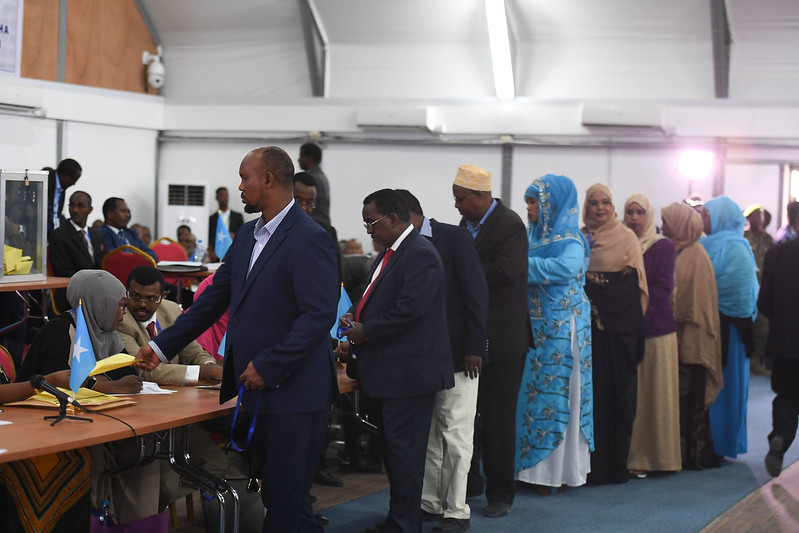
From early 2006, tensions erupted into fighting between the Islamists on one side and the government and allied warlords on the other. The militias that fought for the Islamic Courts finally gained the upper hand. They soon controlled large parts of southern Somalia. The Ethiopian army intervened in December and dispersed all but a small core of Islamist forces. This was the nucleus from which Al-Shabaab (The Youth) emerged in 2007. In the following years, Al-Shabaab evolved into the strongest Somali force, which temporarily (between 2009 and 2011) ruled southern Somalia including Mogadishu and other urban centers and was then from 2011 driven out by a massive campaign of more than 10,000 African Union-troops deployed to Somalia. As of 2022, some 22,000 AU forces are stationed in southern Somalia. Together with around 10,000 Somali National Army soldiers and a smaller number of USA special forces (waging drone war) they have not managed to defeat Al Shabaab, which not only fights a guerilla war against the Somali government and its allies but actually also governs substantial rural areas, delivering justice and security at the local level and building-up some basic legitimacy in this way, despite the fact that the violence of the extremists, exercised through harsh punishments of (alleged) criminals or enemies and through regular terror attacks with many civilian casualties mainly in Mogadishu appalls many Somalis (Hoehne and Gaas 2022; Bakonyi 2022).
No one is legitimate
While a new war – one characterized as “counter-terrorism war” – escalated in Somalia and has cost tens of thousands of lives between 2007 and today, international actors have been trying to establish a government in Mogadishu, based on a new federal constitution (which was partly drafted by German legal specialists working for the Max Planck Foundation, which contrary to the name is not a basic research institute but a consultancy firm). Based on that constitution, indirect elections were held for the first time in 2012, and Hassan Sheikh Mahamoud became president. He sought to implement the federal constitution and establish federal states. The idea was to achieve some division of power in the state and between (patrilinear descent) groups through federalization. Traditionally, in Somali society, affiliation is regulated less by territory than by descent in the paternal line. Mahamoud’s government succeeded in establishing some federal states, at least nominally. Nonetheless, Al-Shabaab still controlled the hinterland of southern Somalia.
Also Mahamoud’s government was extremely corrupt. Approximately 70 percent of the funds given from outside disappeared into the private pockets of government actors, as documented by the World Bank, among other sources. The term of office of the following president, Mohamed Abdullahi Farmajo, was accompanied by massive accusations of corruption as well. Farmajo negated the federal model of government and worked toward the centralization of power.
Given the limited function and low legitimacy of Farmajo’s government and the state in Somalia as a whole, the question arises why elections are nevertheless organized at great expense. It is common knowledge how corrupt the political actors are and that they have little support among the population. A leading UN representative said in a briefing end of 2021, at which the author participated, that “no matter how the election process turns out, it will not contribute to any improvement”. A German NGO worker told an expert panel in January 2022 (again, the author was present at this meeting) that his biggest concern was how the losing side would react after the corrupt election. Some fear a new escalation of violence.
One explanation is that Somali elites and external aid workers benefit from elections. Somali elites make sure that they get well paid for their participation in the farce that the elections are. In order to continue to carry out projects in the crisis-ridden country, Western aid organizations need administrative partners to sign off on projects – which is obviously an end in itself, because the aid often does not benefit the ordinary population, but the external actors and their Somali elite partners. Moreover, the elections formally support the narrative of Western governments that things are “getting better” in Somalia. In the end, even Al-Shabaab benefits from the election disaster. Although the militant extremists do not have a broad basis of legitimacy either, they only need to do things a little better than the government, and they can gain some support from the conflict-weary population.
Instead of holding elections, Somali political actors should seek reconciliation and strive for political dialogue with all relevant powers in Somalia, including Al Shabaab. Yet, in Somalia, this seems to be made impossible by an (informal) doctrine of military counter-terrorism mixed with a focus on formal democratization and institution building, no matter how hollow the construct of the thus erected “government” is.
Markus Virgil Hoehne is a social anthropologist at the University of Leipzig researching on conflict, identity, state-building, and dealing with the violent past in Somalia and Peru. He has been working on Somali issues since 2001. He is the author of Between Somaliland and Puntland: Marginalization, Militarization and Conflicting Political Visions (Nairobi: Rift Valley Institute) and the co-editor of Dynamics of Identification and Conflict: Anthropological encounters (New York: Berghahn).
Bibliography:
ACLED 2021: A Turbulent Run-up to Elections in Somalia. https://acleddata.com/2021/04/07/a-turbulent-run-up-to-elections-in-somalia/
Bakonyi, Jutta 2022: War’s Everyday: Normalizing Violence and Legitimizing Power. Partecipazione&Conflitto Vol. 15, No. 1: 121-138
EASO 2021: Country of Origin Information Report: Somalia Security situation. https://reliefweb.int/sites/reliefweb.int/files/resources/2021_09_EASO_COI_Report_Somalia_Security_situation.pdf
Elmi, Afyare 2021: The Politics of the Electoral System in Somalia: An Assessment. Bildhaan: An International Journal of Somali Studies: Vol. 21: 99-113, available at: https://digitalcommons.macalester.edu/bildhaan/vol21/iss1/10
Gaas, Mohamed Husein and Stig Jarle Hansen 2022: A Near End to Somalia’s Election Conundrum? RAAD Policy Brief 1:2022.
Hoehne, Markus Virgil and Mohammed Hussein Gaas 2022: Political Islam in Somalia: From underground movements to the rise and continued resilience of Al Shabaab, in J.-N. Bach and Aleksi Ylönen (eds.): Routledge Handbook of the Horn of Africa. London: Routledge, pp. 411-427.
Ibrahim,Ahmed Sheikh 2018: The Shari’a Courts of Mogadishu: Beyond “African Islam” and
“Islamic Law”. Dissertation, the Graduate Faculty in Anthropology, City University of New York.
Somalia Corruption Report July 2020, available at: https://www.ganintegrity.com/portal/country-profiles/somalia/
The New Humanitarian 12 May 2022: Gun prices soar ahead of Somalia’s presidential elections https://www.thenewhumanitarian.org/news/2022/05/12/gun-prices-soar-ahead-of-somalias-presidential-elections
VOA 30.10.2009: Waste Dumping off Somali Coast May Have Links to Mafia, Somali Warlords, available at: https://www.voanews.com/a/a-13-2005-03-15-voa34/306247.html
Cite as: Hoehne, Markus Virgil. 2022. “Perpetuating conflict through democratization: Presidential elections in Somalia.“ FocaalBlog, 13 May. https://www.focaalblog.com/2022/05/13/markus-virgil-hoehne-perpetuating-conflict-through-democratization-presidential-elections-in-somalia/
